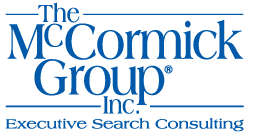From the Merriam Webster Dictionary, the definition of diversity:
1: the condition of having or being composed of differing elements: VARIETY especially: the inclusion of different types of people (such as people of different races or cultures) in a group or organization
2: an instance of being composed of differing elements or qualities
As recruiters at an executive search firm, my colleagues and I have been engaged in conversations about diversity with companies, candidates, and potential clients throughout our 45 year history. We are often asked about our ability to help our clients recruit a diverse slate of candidates. Candidates frequently ask about companies’ commitment to diversity. Candidates are also asked about their own commitment to creating a diverse work environment, especially when they are interviewing for leadership roles.
As with all other aspects of recruiting and job searching, preparation is the key. As a company, you probably already have corporate objectives to create a diverse work force. There are things you can do to ensure your strategic and tactical plans lead to successfully increasing the diversity of your workforce. As a candidate, you can identify and explain what makes you unique and diverse. As a recruiter, you can expand your sources of referrals and prospects to increase your awareness of talented people with diverse experiences and backgrounds.
Here are three thoughts on addressing diversity as a company.
1. Define Diversity
As a Company, bring clarity to the discussion about diversity by defining what makes a candidate diverse in your company. One Fortune 50 company told me a diverse candidate was someone who worked their way through college at a non-Ivy league school. They were interested in candidates “who had not ridden the conveyor belt to success.” One client, a non-profit focused on addressing the interests of women of a particular ethnicity, described diverse candidates as men who were not part of their ethnic group.
Avoid narrowly focusing on diversity in terms of gender or ethnicity. Diversity of ideas is the goal. That can be achieved by building teams of people with different life experiences, educational paths, geographic origins, age, weight, physical ability, prior career experiences, and life styles. Your company classical music enthusiast, Deadhead, country music lover and rap music fan can make a very effective working team (though they may argue about the music to play in the car on the way to visit a client.)
While you certainly can’t ask candidates questions about their ethnic background, marital status or love interests, you can make clear the company’s commitment to creating a hospitable environment for all employees. One company employee told me they are redesigning a call center with gender-neutral bathrooms, not because a demand has been made, but to send a clear message that all kinds of people are welcome to work there.
2. Challenge Assumptions
Corporate attitudes and assumptions sometimes need to be challenged. Companies can look for ways to create jobs and careers for people who are often excluded from consideration because of narrow standards. Requiring that your senior level corporate finance and accounting team have accounting degrees is reasonable. Failing to acknowledge years of experience in lieu of a degree for a billing clerk or payroll manager may be short-sighted.
A past client had a senior executive who desired to hire a successful employee from his prior employer as a Director of Sales. It turns out the new company had an absolute rule that Directors must have degrees. The candidate did not have a degree but did have a very successful record as a Director of Sales. The prior employer didn’t have a degree requirement for that role. The new company could not adjust the rule for just one person, having previously denied promotions to existing employees who lacked the college degree. That rule precluded them from hiring a highly-desirable, proven performer as a Director, all because of a lack of a degree that was irrelevant to the candidate’s ability to do the job successfully.
There are many ways to establish hiring standards that evaluate comparable experience and do not create impediments to hiring talented, successful people. No one is automatically too young to lead or too old to learn new skills. Skills are transferrable from one industry to another. Smart and competent people bring their knowledge and experience and their desire to succeed to every job. While the best predictor of future success is past performance, it is not the only predictor. That point was made in the movie, “Can You Ever Forgive Me”, as Melissa McCarthy, known for her comedic talent, proved she was a successful dramatic actress and earned a Best Actress nomination for an Academy Award.
3. Sow Seeds
“The best time to plant a tree is twenty years ago. The second best time is today.” This proverb nicely describes how companies can look at creating a diverse workforce. Deciding today that a company needs diversity among its leadership team is admirable and important. Companies recruiting executive leaders from outside the company are wise to create a diverse talent pool to choose from. It is even wiser to incorporate a recruiting strategy that creates diverse talent pools for every hire every day. Sowing the company with diverse talent today increases the chances that the management and leadership ranks remain diverse as the company grows.
Creating a diverse workforce takes more effort than just enforcing nondiscriminatory practices. Creating a dynamic work environment that attracts talented people is the goal. Celebrating diverse experiences and perspectives creates a vibrant corporate culture, and companies doing that successfully attract and retain the people they need for future sustained success. Do your part to challenge your company’s staid practices. Help your leadership understand the potential rewarding result of challenging traditional expectations and the benefits of creating room for unconventional candidates.
Cheryl Bedard represents the best interests of candidates and clients. She identifies opportunities for success for talented executives and companies and reconciles hopes and dreams with reality.

